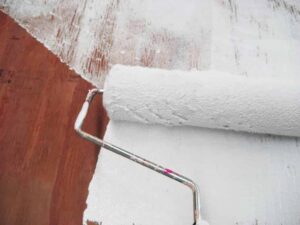What are the pros and cons of using paint and primer in one?
May 18, 2022With the constant media influence on certain paint products and how they are advertised, we become increasingly dependent and confused on what we are actually purchasing. Consumers that tackle do-it-yourself projects want value and they want it fast and easy.
Should I buy paint and primer in one? It turns out, you don’t need to buy a separate primer. You can skip the priming step and your project will be done faster. Let me shed some light on this and explain what you are buying and why or why not it’s a value and/or a good choice.
- What is paint and primer in one? It’s a high quality, interior or exterior paint that has increased adhesion and stain blocking capability. Most high-quality interior paints when applied directly to a bare or previously painted surface will stick, cover and look similar once finished. A paint and primer in one is not designed for every project. Some surfaces require specialty primers that block out color, have higher adhesion qualities or handle corroded surfaces. Exterior surfaces such as wood and metal require a primer for proper adhesion and blocking power. Vinyl and aluminum siding for adhesion purposes and stucco/block may need a specialty primer to handle the PH level. Paint and primer in one can help in these situations, although, using a specialty primer is the best choice in problem prevention.
- Why do I need a primer? There are many reasons why a primer is necessary. Check the surface you are painting and look for these clues. Interior or exterior? Drywall or plaster? Metal? Wood? Does it have a sheen/gloss? Is it a dark color? Is there rust or corrosion present? Is the surface bare or previously painted? What shape is the previous coating in? Without a proper primer you may lose adhesion or a surface contaminate may bleed through. Or you may need to apply 3-4 coats to block out a deep color. Check these factors before you apply paint or paint and primer in one directly to the surface. Clean, dry and dull is the main focus when preparing a surface.
- What are the advantages? It all depends on the project. Coating previously painted interior drywall is the only surface I would trust these products on. It’s a time saver if you can apply the paint directly to the surface and not have to prime. These surfaces normally don’t require a specialty primer.
- Disadvantages? Most products that are advertised as paint and primer in one will be more costly. The project will also cost you more if you buy a paint and primer in one, have issues with adhesion or bleed through, then have to buy another primer just to have to repaint. This will also waste your precious free time and cost you hard earned dollars trying to fix a mistake. Analyze the project and ask a paint expert before buying your products.
Here are some examples of surfaces that may require a specialty primer
- Kitchen cabinets
- Interior woodwork, painted or stained
- Interior or exterior metal surfaces
- Cement, block, brick or stucco
- Plaster walls
- Rusted or corroded surfaces
- Very dark or bright colors
- Shiny surfaces
- Chalky surfaces
- Surface contaminates like ink, marker and grease
- Bare wood


